Call Us
+86 136 6007 9809
Call Us
+86 136 6007 9809
Jan. 17, 2024
Fastener installation process using standard solutions
Fasteners are components used to connect, fix or clamp two or more parts, including bolts, studs, screws, and so on. In various mechanical equipment and structures, installing fasteners is crucial and directly related to the equipment's safety performance and working efficiency. Therefore, there are some important considerations to follow while installing fasteners to ensure safety and reliability.
Scope of application of fasteners:A fastener is a tool or device to connect, secure, and support objects. They have various applications in various fields, such as machine building, construction, automotive, aerospace, etc. In this article, we will introduce the uses of fasteners in several ways.
1. Fasteners are mainly used to connect and secure objects. In mechanical engineering, fasteners are widely used to assemble machines and equipment. For example, bolts and nuts are commonly used to connect two or more parts to ensure they remain stable and secure during operation. In addition, screws are also widely used to secure parts such as plates, wood, and plastics. Using fasteners can effectively prevent parts from loosening or falling off, ensuring the proper functioning of equipment.
2. Fasteners also play an essential role in the construction field. Whether it is the erection of a building structure or the installation of interior decoration, fasteners are indispensable. For example, bolts and nuts are used to connect and secure steel structures to ensure the stability and safety of the building. In addition, screws are used to install doors, windows, cabinets, furniture, etc., to ensure that they are securely fastened to the walls or floors. The use of fasteners not only improves the structural strength of a building but also increases its lifespan.
3. Fasteners are also widely used in automobile manufacturing and repair. A large number of bolts, nuts, and screws are used to connect and secure various parts of automobiles during the manufacturing process. For example, the engine, chassis, and body parts are fixed with fasteners. In addition, fasteners also play an essential role in the automobile repair process. Fasteners may need to be replaced or refastened when a car breaks down to ensure proper operation.
The requirements for fasteners in aerospace are even more stringent. Because aerospace vehicles operate at high speeds and in extreme environments, fasteners must have excellent strength and reliability. Aerospace fasteners are often constructed with specialized materials and designs to ensure their performance in harsh conditions. These fasteners play a vital role in the assembly and maintenance of spacecraft and are directly related to their safety and reliability.
In addition to the above application areas, fasteners are widely used in electronic equipment, household appliances, medical devices, and other fields. In electronic equipment, tiny screws and nuts are used to fix circuit boards and other components. Fasteners install and secure various components in household appliances, such as televisions, washing machines, and refrigerators. Fasteners ensure the stability and reliability of medical devices and provide accurate medical diagnosis and treatment.
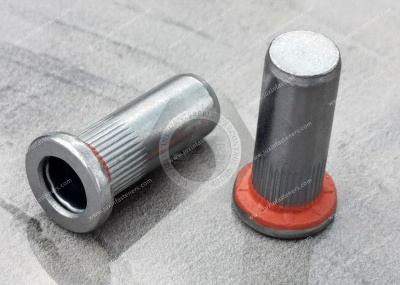
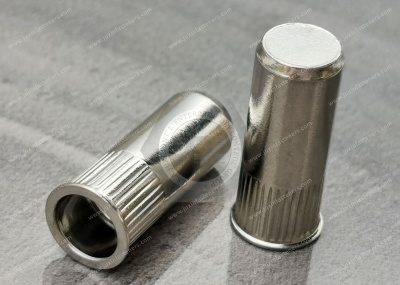
What is called a fastener connection?
Fasteners are two or more parts (or components) tightly connected to become whole when using a class of mechanical parts of the general term. The market is also known as "standard parts." Usually include bolts, studs, screws, self-tapping screws, wood screws, nuts, pins and keys, washers, gear rings, rivets, combinations, and connection vice.
A fastener is a tool or device to connect, secure, and support objects. They have various applications in various fields, such as machine building, construction, automotive, aerospace, etc. Fasteners are crucial in mechanical engineering, construction, automotive, aerospace, and other fields. The correct selection and use of fasteners can ensure objects' stability, safety, and reliability, improving productivity and product quality. With threaded connectors (such as screws, bolts, and nuts) and a variety of washers will be a variety of components, parts, and components firmly connected to the To, known as threaded connection, referred to as screw connection.
Installation of fasteners and process requirements solutions:The general requirements for the installation are firm and reliable: no damage to the components, no damage to the coating layer, and no damage to the insulation of the elements with the correct location and direction of the mounting parts. Specific requirements are as follows:
1. it should be ensured that the physical object is consistent with the assembly drawing.
2. Submitted to the assembly of all materials and parts, components (including external components) should be in line with the current standards and design documents, and only after passing the inspection can they be installed.
3,.Generally, the supplementary processing of purchased parts is not allowed (except when the drawings have provisions).
4. Before assembly of mechanical parts and components of the cleaning process, eliminate the attached debris to prevent prior wear and tear and cause additional deviation.
5, mechanical parts and components in the assembly process are not allowed to produce cracks, depressions, pressure injuries, or other damage that may affect the performance of the equipment.
6, the same mechanical parts and components should be interchangeable. If necessary, it can be adjusted according to the provisions of the process documentation for repair.
7, fixed connection parts and components are not allowed to have a gap and loose. Activity-connected parts and components should be able to average clearance in the direction of the specified flexible and uniform movement.
8, must carefully check the assembled products and keep them clean. Otherwise, the use will cause mechanical and electrical failure.
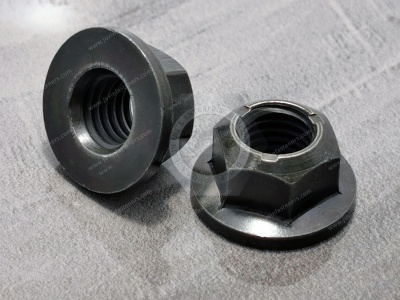
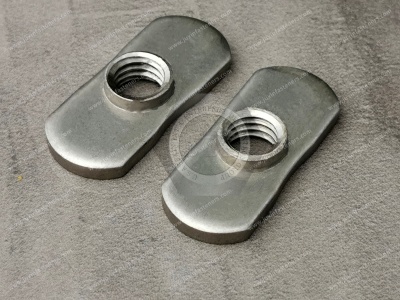
Fastener screwing process and critical processes:
Bolt production process: process (cold heading), disk element annealing pickling drawing (annealing) cold heading, packaging surface treatment heat treatment rolling (rolling) teeth.
1. Purpose of annealing: Heat the wire to the appropriate temperature, keep it for a certain period, and then slowly cool it down to adjust the crystalline organization, reduce the hardness, and improve the wire's machinability at room temperature.
2. Operation flow:
Feeding: The products to be processed will be hung in the furnace. Pay attention to the furnace cover, which should be covered tightly. Generally, one furnace can process several rolls at the same time.
We are processing several rolls at the same time.
Heating: The furnace temperature is slowly (about 3-4 hours) returned to the specified temperature.
Insulation: material 1018 wire at 680 ℃ -715 ℃ to keep 4-6h, material 10B21 wire at 740 ℃ -760 ℃ to keep 5.5h.
-760 ℃ to keep 5.5-7.5h.
Cooling down: Slowly (about 3-4 hours) reduce the furnace's temperature to below 550 ℃, then cool it down with the stove to room temperature.
Quality control:
Hardness: material 1018 and 1022 wire annealed hardness of HV120-170, and the material for the medium carbon wire annealed hardness of HV120-180.
Appearance: There shall be no oxide film and decarburization on the surface.
3. The purpose of pickling is to remove the oxide film on the surface of the wire and on the metal surface to form a layer of phosphate film, reduce wire drawing, cold pier or creating, and other processing, and reduce the abrasion of the mold.
4. Workflow:
Acid washing: The whole disk yuan was immersed at room temperature in 20-25% of the three hydrochloric acid tanks for several minutes to remove the oxide film on the surface of the wire.
Clearwater: remove the hydrochloric acid corrosion products on the surface of the wire.
Oxalic acid: to increase the activity of the metal so that the following process generates a denser film.
Phosphate treatment: the disk will be immersed in phosphate, steel surface, and the formation of the treatment solution contact, steel dissolved to generate insoluble compounds (such as Zn2Fe (Po42-4H2o), attached to the steel surface to form a film of clear water: to remove the film surface residues.
Lubricant: As the coefficient of friction of the phosphate film is not very low, it can not give the processing of adequate lubrication, but with the reaction of the metal soap (such as sodium soap) to form a hard layer of metal soap, it can increase its lubricating properties.
5. The purpose of drawing: the coil will be cold-drawn to the required wire diameter. Some products can be divided into rough pulling (shelling) and fine pulling, which are two stages.
6. (Cold and hot heading) head forming purpose: the wire will be cold upsetting (or hot forging) to make the head of the bolt or nut form and achieve the shape and length of semi-finished products (or thickness).
5. Purpose of screw molding: Roll or tap the molded semi-finished product to achieve the required thread. I am generally speaking for bolts (screws), known as rolling teeth, large diameter bolts or teeth, known as moving teeth, and nuts, known as tapping.
7. Fastener selection: cross slot screws' fastening strength, beautiful appearance, conducive to the use of automated assembly.
When the requirements of compact structure, high connection strength, and smooth shape, you should try to use hexagonal screws.
Installation parts are all metal parts with steel washers. Porcelain, wood, and other fragile parts should use soft washers.
Daisy pads should be used if grounding connectivity is strictly required.
In line with the RoHS directive, products should use environmentally friendly screws and gaskets.
8. Tightening method: tighten the screws of the rectangular workpiece, which shall start from the center and gradually to both sides of the symmetrical expansion. Tighten the screws of the square workpiece and round workpiece, and they should be in a diagonal order.
When tightening the screws of square workpiece and round workpiece, it should be done in diagonal order. No matter which kind of screws are assembled, the screws should be made first in sequence and then tightened gradually in steps to avoid deformation of structural parts and contact.
This is to avoid deformation of structural parts and poor contact.
9. Quality standard of the threaded connection
A. Screws and bolts should be tightened, and the exposed length of the screw tail should not be less than 1.5 buckles.
B, countersunk head screws after fastening; the head should be attached to the surface to keep flat, allowing slightly lower, but should not exceed 0.2mm.
C. The threaded connection requires tightening and can not be loosened. However, the non-metallic parts (such as the potentiometer nut) should be tightened moderately.
D. The spring washers should be flattened all around by the nut.
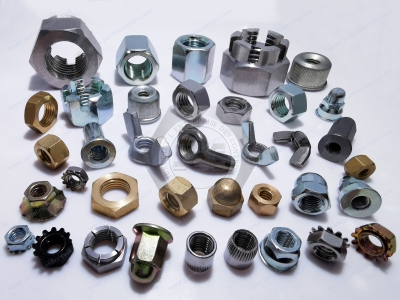
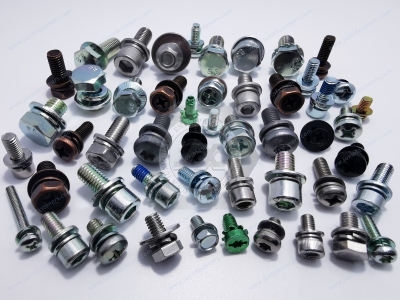
Classification of fasteners
Bolt: by the head and screw (with external threads of the cylinder) two parts of a class of fasteners, usually with nuts or screw holes, for the connection of two objects through holes or screw holes;
Stud: no head, only both ends have external threads of a class of fasteners;
Screws: also by the head and screw, two parts of the composition of a class of fasteners, usually divided into machine screws, set screws, special-purpose screws;
Nuts: With internally threaded holes, the shape is generally flat, hexagonal, or cylindrical, with studs and bolts used to connect two objects to make a whole.
Self-tapping screws: these screws have high hardness and can be screwed directly into the component.
Pins and keys: mainly for parts positioning, parts connection, fixed parts, and power transmission.
Washers: points: flat, circular, elastic washers
Retaining ring: for installation in the machine, equipment, shaft groove, or hole groove so that the two parts will not move axially;
Rivet: a class of fasteners consisting of two parts: the head and the nail rod;
Combination parts and connecting vice: combination parts refer to the combination of a class of fasteners supplied. Connection is a special bolt, nut, and washer combination of parts.
1. Types of threaded fasteners: hexagon head bolts, double-headed studs, hexagon nuts, hexagon slotted nuts, hexagon socket cheese head screws, slotted cheese head screws, slotted countersunk head screws, setscrews, flat washers, spring washers, stop washers for round nuts, round nuts
2. Types of pins: cylindrical pins, taper pins
3. Types of keys: there are many types of keys commonly used in the form of ordinary keys, half-round keys, hook wedge keys, etc., of which the standard keys are the most common. Keys are also standardized. Flat key Half-round key Hook head wedge key
The types of nuts are self-locking nuts, anti-loosening nuts, lock nuts, four-jaw nuts, screw-in nuts, insurance nuts, thin rod screw connection nuts, self-locking hexagonal cap nuts, special foot screws with nuts, hexagonal coronation thin nuts, ring nuts and so on.
Self-locking nut: A self-locking nut relies on friction. General nuts will come loose due to vibration and other reasons. Self-locking nuts were invented to prevent this phenomenon. They are mainly anti-loosening and anti-vibration.
Anti-loosening nut: anti-loosening nut, self-tightening nut is a joint fastening anti-loosening nut, including mechanical anti-loosening, riveting and punching anti-loosening, friction anti-loosening, construction anti-loosening and so on.
Lock nut: The lock nut is widely used in machinery and other industries; its working principle is to use the friction between the nut and bolt for self-locking.
Four-jaw nut: A four-jaw nut is mechanical equipment with closely connected parts through the inner thread; nuts and bolts of the same specification can be connected.
Screw-in nut insurance nut: insurance nut raw materials for 45 # steel, hexagonal cold-drawn extruded steel rods, surface galvanized, tempering treatment, turning, milling, and other mechanical cutting cold processing.
Eye Nut: Ring Nut refers to the nut and bolt or screw together to play a role in the fastening parts, which is all the production of manufacturing machinery that must be used in a fastener.
Please get in touch with me if you want high-quality, high-strength carbon steel screws&carbon steel nuts fasteners or technical support for structural design. Thanks.Email:adelajonly@gmail.com
Website: https://www.juxinfasteners.com
Contact Us
Tel.:
+86 020 8621 0320
+86 020 3121 6067
Technical Support:
Navigation
SEND INQUIREY